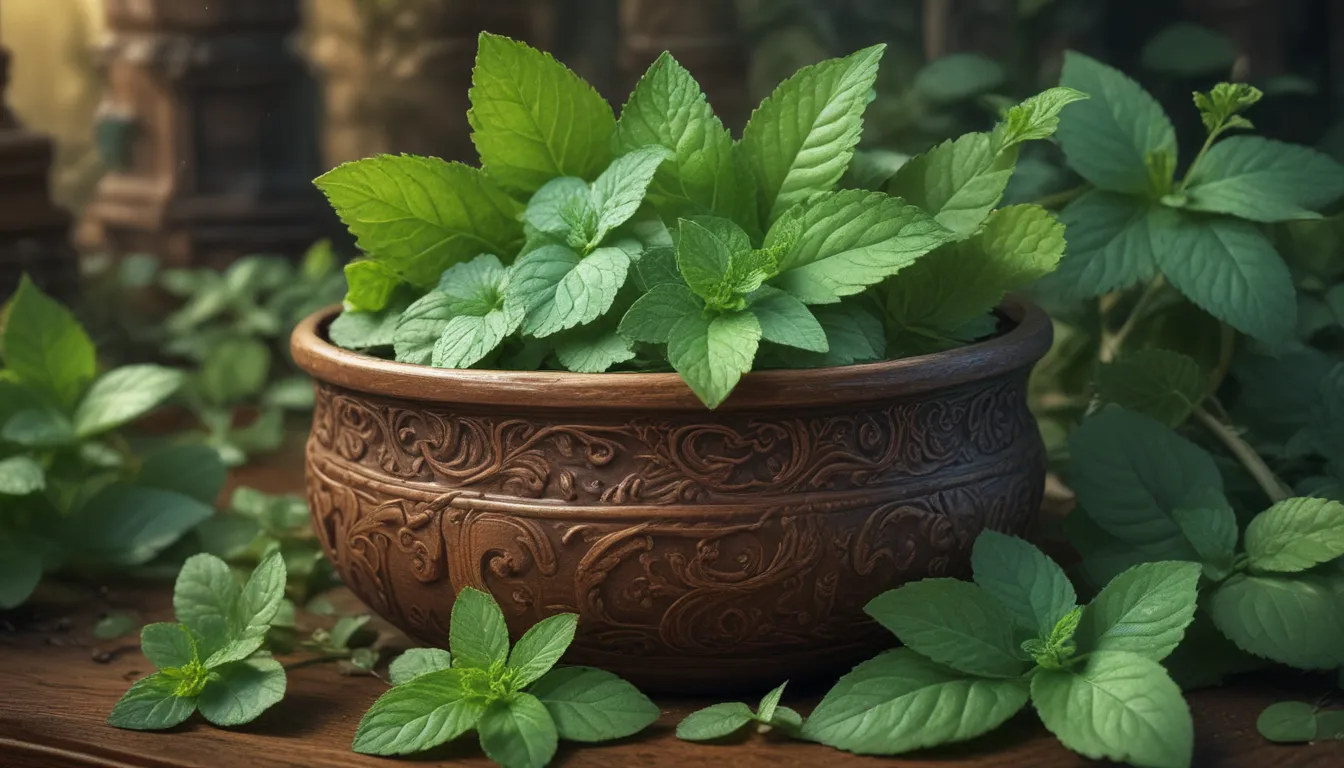The pictures in our articles might not always show exactly what the text is talking about. We use these images to make the article more interesting and eye-catching. They are there to add to the text, but not to replace it or show every detail.
Mint, with its refreshing taste and therapeutic properties, has been a beloved herb throughout history. From its origins in ancient civilizations to its modern-day culinary and medicinal uses, mint continues to captivate people with its distinct flavor and versatility. In this article, we will delve into 13 intriguing facts about mint, exploring its rich history, health benefits, and much more. So, sit back, relax, and let’s discover the fascinating world of mint!
The Versatile Herb That is Mint
Mint is a popular herb known for its refreshing aroma and flavor. Widely used in culinary and medicinal practices, mint adds a delightful touch to various dishes, beverages, and even beauty products. Its versatility makes it a go-to ingredient for everything from teas to toothpaste.
Many Shades of Mint
Did you know that there are over 20 different varieties of mint? From peppermint to spearmint, chocolate mint, and apple mint, each type of mint offers a unique taste and scent, making them versatile in various culinary applications.
A Glimpse into Mint’s Past
Mint has a long and storied history, dating back thousands of years. References to mint can be found in ancient Greek mythology, and the Egyptians valued it for its medicinal properties. Throughout history, mint has been cherished for its soothing effects on digestion and overall well-being.
Growing Your Own Mint Garden
Mint is a perennial herb that thrives in diverse climates. Known for its vigorous growth, mint can be easily cultivated in gardens, pots, or indoors. However, its invasive nature requires caution and containment to prevent it from taking over your garden.
Nutrient-Rich Mint
Rich in essential vitamins and minerals like vitamin A, vitamin C, and manganese, mint is a powerhouse of nutrients. Its antioxidant properties help protect the body against free radicals, promoting overall health and well-being.
Soothing Properties of Mint
Mint has been revered for its medicinal properties throughout history. Known for its ability to soothe digestive issues such as indigestion, nausea, and bloating, mint tea is a popular natural remedy for calming an upset stomach.
Mint for Fresh Breath
The refreshing aroma of mint makes it a popular choice for freshening breath. Chewing on mint leaves or using mint-flavored products can help mask bad breath and leave your mouth feeling clean and invigorated.
Mint in Traditional Medicine
In traditional medicine practices, mint has been used to alleviate headaches, relieve congestion, and reduce stress. Its natural compounds are believed to have soothing effects on the body and mind, making it a valuable tool for holistic wellness.
Mint in Your Cocktails
Mint is a staple ingredient in many popular cocktails, such as the Mojito and the Mint Julep. Its bright and refreshing flavor adds a delightful twist to these drinks, making them perfect for summer enjoyment.
Natural Insect Repellent
The strong scent of mint acts as a natural repellent for insects like mosquitoes and ants. Planting mint around your home or using mint-based repellents can help keep these pesky bugs at bay, naturally.
Beauty Benefits of Mint
Mint is a common ingredient in beauty and skincare products due to its cooling and soothing properties. It can help calm irritated skin, reduce redness, and provide a refreshing sensation, making it a popular choice for skincare routines.
DIY Remedies with Mint
Mint leaves can be used to create homemade remedies for various ailments. From soothing sunburns to relieving bug bites, applying crushed mint leaves or using mint-infused oils can provide natural relief for minor skin irritations.
Mint: The Symbol of Hospitality
For centuries, mint has been associated with hospitality and used to create a welcoming atmosphere. In ancient times, mint adorned dining tables, with its aroma believed to stimulate conversation and enhance dining experiences.
In Conclusion
Mint is more than just a culinary herb; it is a treasure trove of health benefits and interesting facts. Whether you’re enjoying a mint-infused drink, using mint as a natural remedy, or simply relishing the invigorating aroma of mint leaves, take a moment to appreciate the rich history and benefits that this incredible herb offers.
Frequently Asked Questions about Mint
-
What are the health benefits of mint?
Mint is known for aiding digestion, relieving headaches, improving respiratory health, promoting oral hygiene, and having antioxidant and anti-inflammatory properties. -
Can mint help with bad breath?
Yes, mint is a natural way to combat bad breath. Its fragrance helps mask unpleasant odors and leaves a refreshing taste in the mouth. -
How is mint used in cooking?
Mint is a versatile herb used in both sweet and savory dishes, such as salads, desserts, sauces, teas, and cocktails, adding a burst of freshness to any dish. -
Can I grow my own mint at home?
Yes, growing mint at home is easy. It thrives in well-draining soil, requires regular watering, and can be grown in a garden or pots, making it ideal for all gardeners. -
Are there different types of mint?
Yes, there are various mint varieties, each with a distinct flavor profile, including peppermint, spearmint, chocolate mint, and lemon mint.
Explore the world of mint with these fascinating facts and unleash the endless possibilities this herb has to offer!






